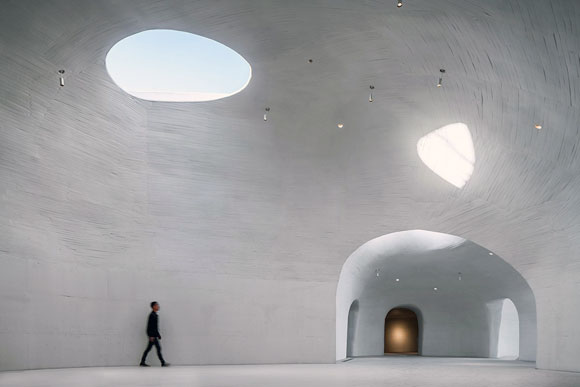#111: THE MOST SEDUCTIVE BUILDINGS OF 2019
UCCA Dune Art Museum, Qinhuangdao, China (photo by Qingshan Wu)
I am avoiding “The Best of” list, because I don’t know how to define “the best.” Instead, I have chosen the adjective “seductive.” Seduction is an act that might lead to enticement or worse, being led astray into questionable moral ground. Seducing someone suggests lurid temptation and even sexual desire.
So why not? Why not list ten projects of 2019 that have led the creative mind astray, enticed and tempted us to desire such an experience?
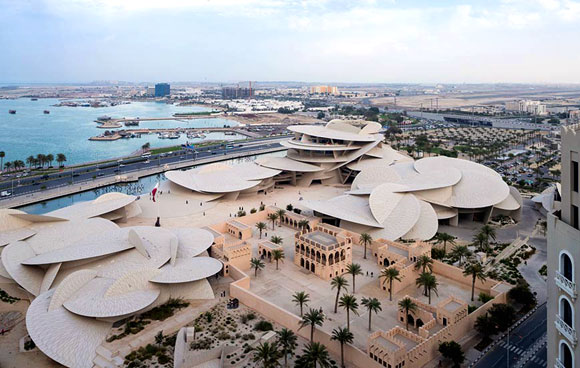
1: The 500,000-square-foot National Museum of Qatar is both a structural feat of glass-fiber reinforced concrete over steel frames, as well as a metaphor of the local mineral formations called the Desert Rose. Upon seeing this work of Atelier Jean Nouvel, I initially questioned if such a striking work of originality was real or a make-believe digital image. Yes, it is real.
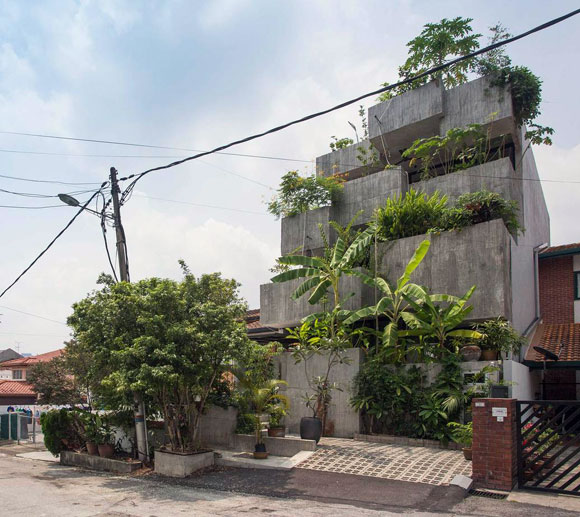
2: Architect Formzero designed this “Planter Box House” for a retired couple in tropical Kuala Lumpur, Malaysia. With edible plants abound and sustainable split bamboo as the concrete formwork, the design is a combination of a green house, garden courtyards, and vertical farm, as well as a statement of Abstract art and Minimalist sculpture.

3: For me, the 770-room Morpheus Hotel in Macau doesn’t represent the curvaceous surfaces of China’s traditional jade carving—as PR statements promote. Regardless, Zaha Hadid’s free styling steel and aluminum exoskeleton presents a stunning visual character unlike anything seen before in city skylines.
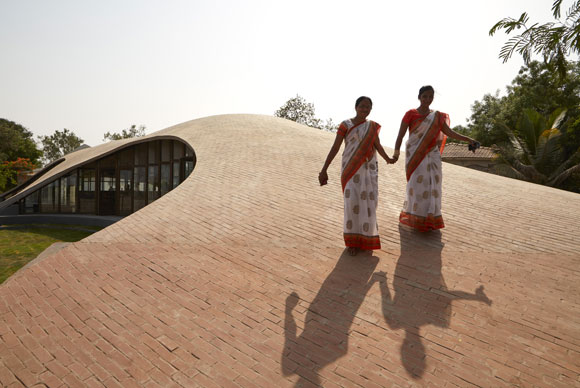
4: In Kopargaon, India, the undulating roof of a building is transformed into a walkable surface, a social area for this children’s library. Sameep Padora’s singular exploration of local tile vaults in structural compression defines the Maya Somaiya Library.

5: Is it a museum or a massive sculpture? A giant symbolic ship honoring the historic waterfront? Or maybe the bizarre building surface recalls the cliffs of Scotland? Over 2,500 textured precast concrete panels create this enigmatic and beautiful United Kingdom project called V&A Dundee.
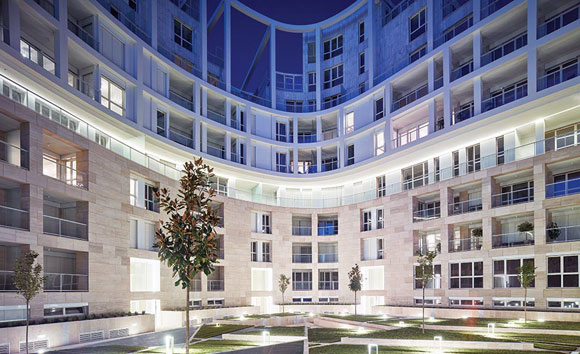
6: In my early years living in New York City, I was fascinated by the works of Peter Eisenman and his propaganda of Formalism, Deconstructivism, the Avant-Garde, Post Humanism, Jacques Derrida, Giuseppe Terragni, blah, blah, etc. I have no idea what the “emancipation and autonomization of the discipline” is about. Critics and users alike considered Eisenman’s buildings to be hostile environments or simply confusing. But at the Residenze Carlo Erba in Milan, the result is not an overly complicated pompous statement of critical theory and mathematical analogs, but rather, the design is an elegant and beguiling composition of program, structure and geometry.
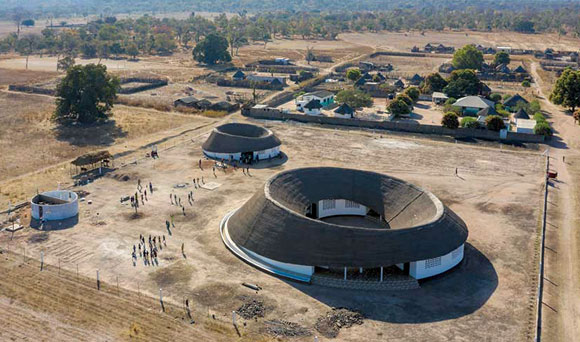
7: Toshiko Mori’s Fass Elementary School is much more than yet another one-classroom schoolhouse. It is a poetic statement of global and local proportions. The modest output of village labor and techniques, such as the bamboo structure, mud brick walls and a grass-thatched roof, delivers a profound, elemental and humane building for the remote area of Sengal, West Africa.
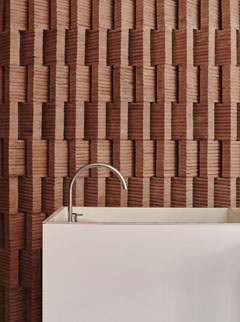
8: To his students, Louis Kahn famously suggested, “You say to a brick, what do you want, brick?” In Brooklyn’s Park Slope, how far can Frida Escobedo go with a brick for Aesop, the beauty products boutique? The theme-and-variations on brick patterns, details, tones, and textures are far-reaching, as Escobedo finds inspiration in the historic fabric of New York’s brick and brownstone buildings.
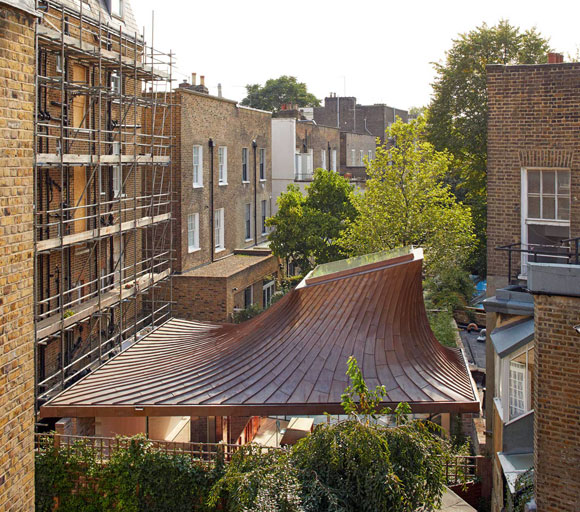
9: Simply called the “House in a Garden,” Gianni Botsford’s 2,500-square-foot jewel-of-a-building occupies a tight urban London site. Recalling the Pantheon in miniature, a heavenly oculus tops off the double-curved, copper and timber roof.
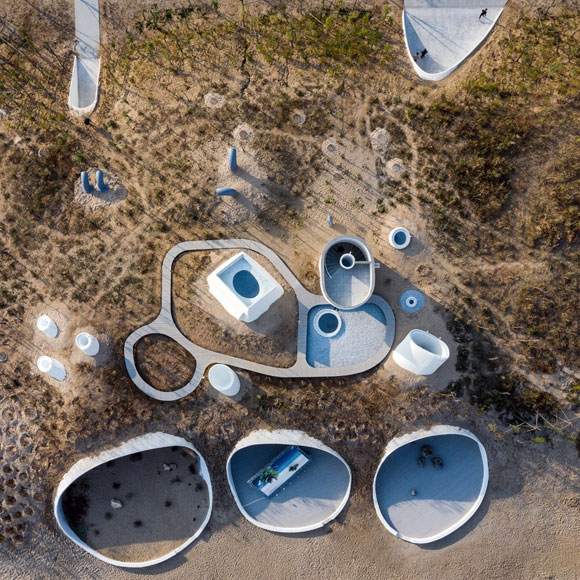
10: (See first image and above.) Yes, this is the third museum on my list. Buildings that house art are usually also seductive statements of art themselves. In Qinhuangdao, China, the UCCA Dune Art Museum goes bizarrely further. Dug into sandy dunes like children with beach toys, this museum is sometimes there and sometimes not. With cave-like galleries partially hidden from the sea, OPEN Architecture’s design for Qinhuangdao is primitive, raw and unforgettable.
(For the list of my all-time 15 favorite buildings, visit here. )

